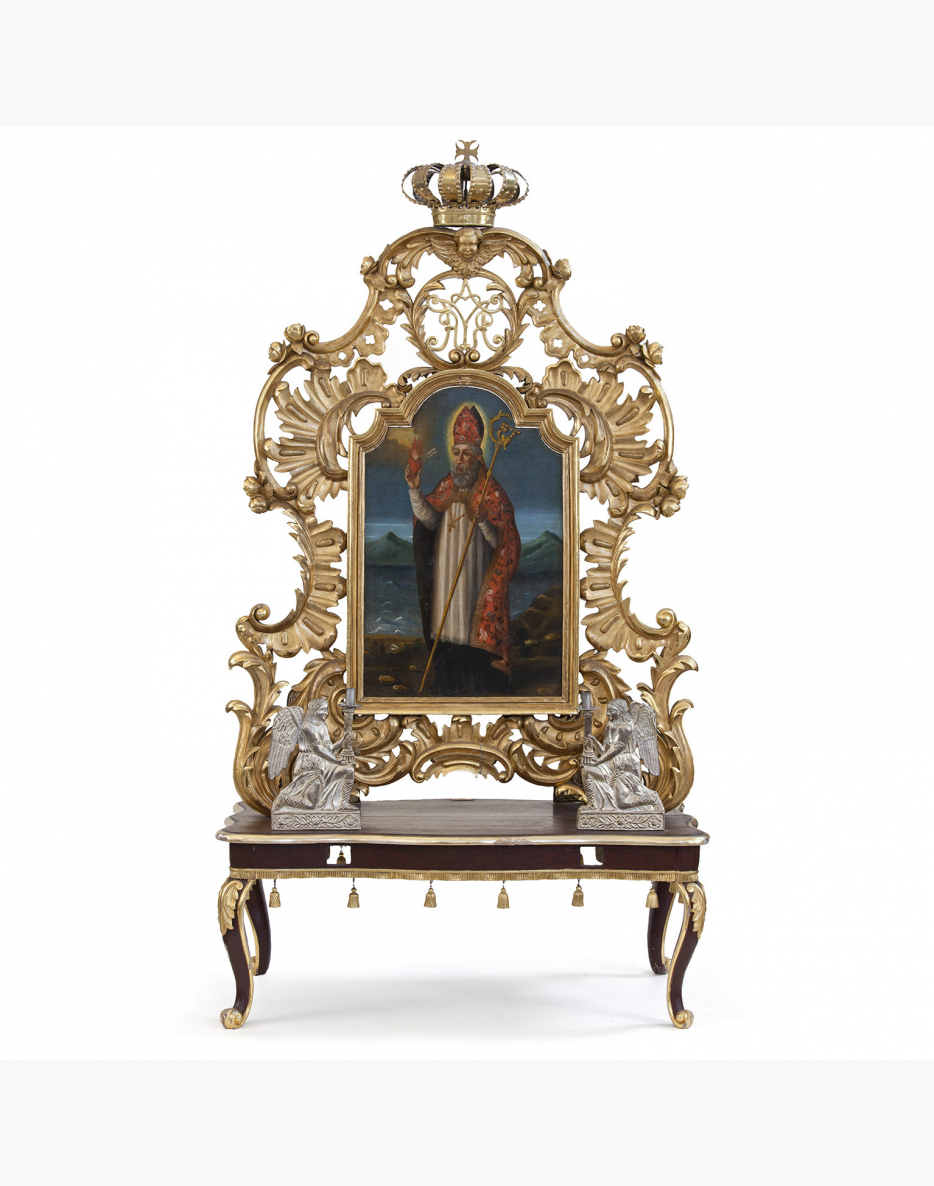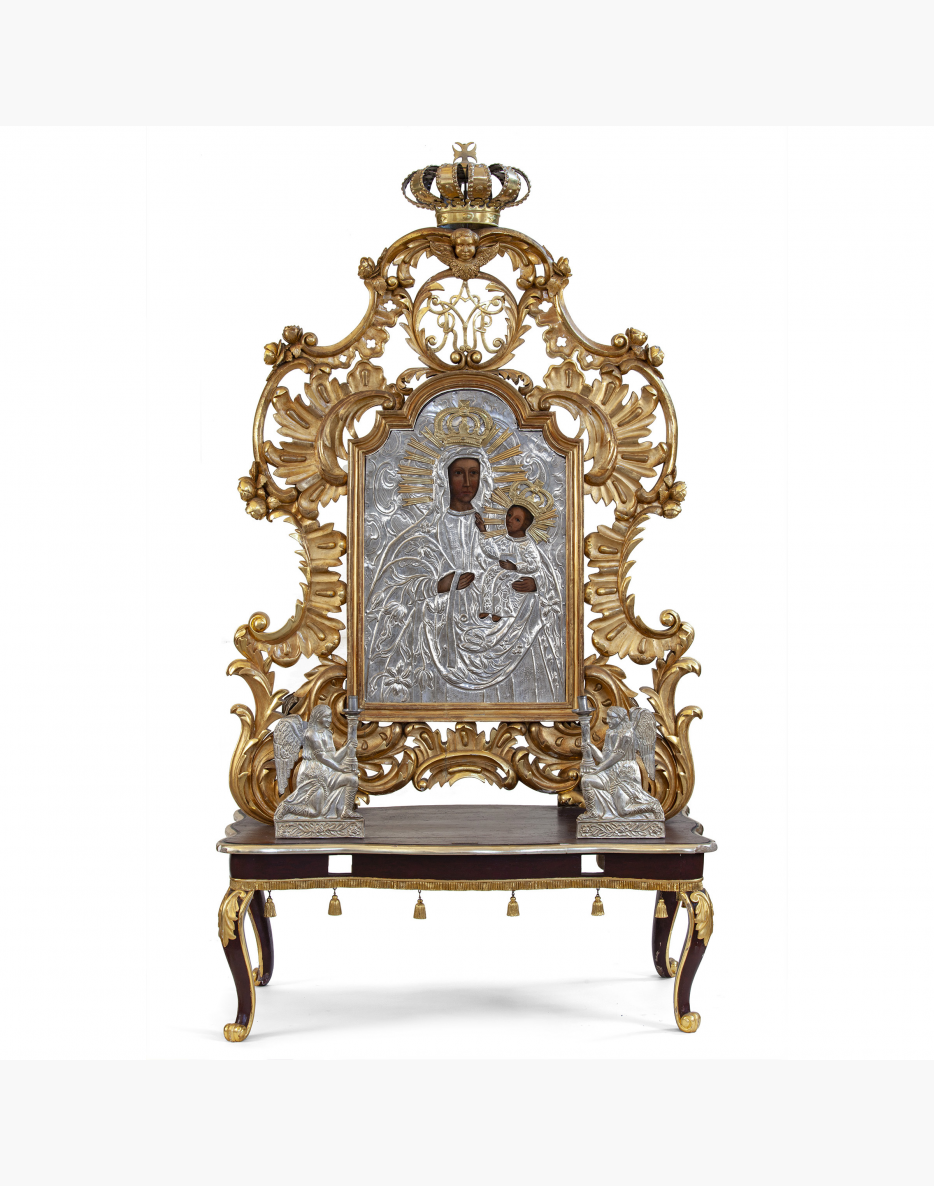Vilnius, 2nd half of the 18th c. Angels – early 19th c.
The elegant cutwork rococo-styled processional altar used to belong to the church of the Augustinian Monastery in Vilnius. The paintings in its retable depict images that are particularly important to this monastery: on one side, a copy of the famous miraculous painting of the Blessed Virgin, Mother of Consolation that used to hang on the main altar of the church, and on the other, an image of the order’s most important saint, Augustine, Bishop of Hippo. St Augustine is depicted in a traditional manner, with clothing and insignia that are characteristic of being a bishop, holding up a burning heart in his hand symbolising the spirituality of the love of God. The landscape painted in the background is reminiscent of the legendary meeting between St Augustine and a child who was trying to scoop out the water from the sea with a seashell. The painting is adorned with a silvered embossed hammered metal cover, which depicts a leather belt in the hands of Mary – an element of the apparel of Augustinian monks, symbolising chastity.

